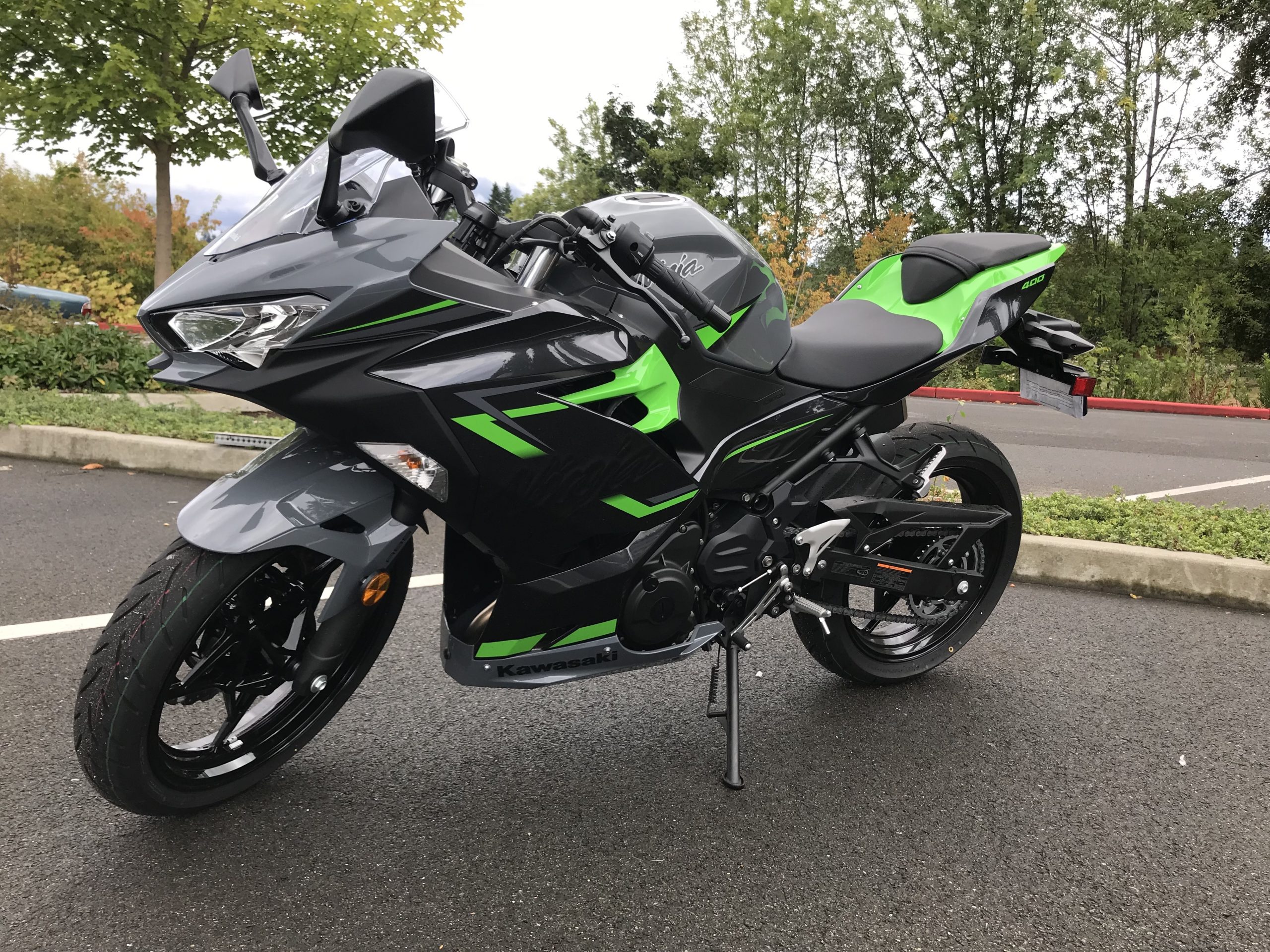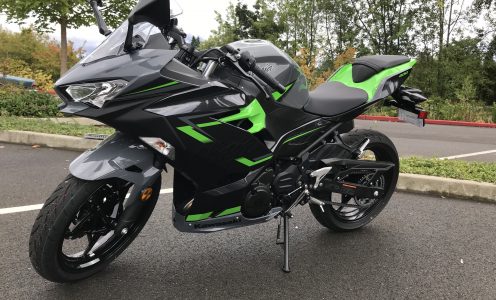You have been wondering whether you should buy a motorcycle. You watched countless videos on YouTube and you are split between excitement to ride and fear of crashing. You have probably talked to your friends and their opinions are split. Or, perhaps, they are advising you to buy a different motorcycle than the one you had in mind. In this post I will break down key factors when buying your first motorcycle and mitigations for risks associated with riding it. I will use data from reputable institutions and rely on personal experiences to help you make up your mind.
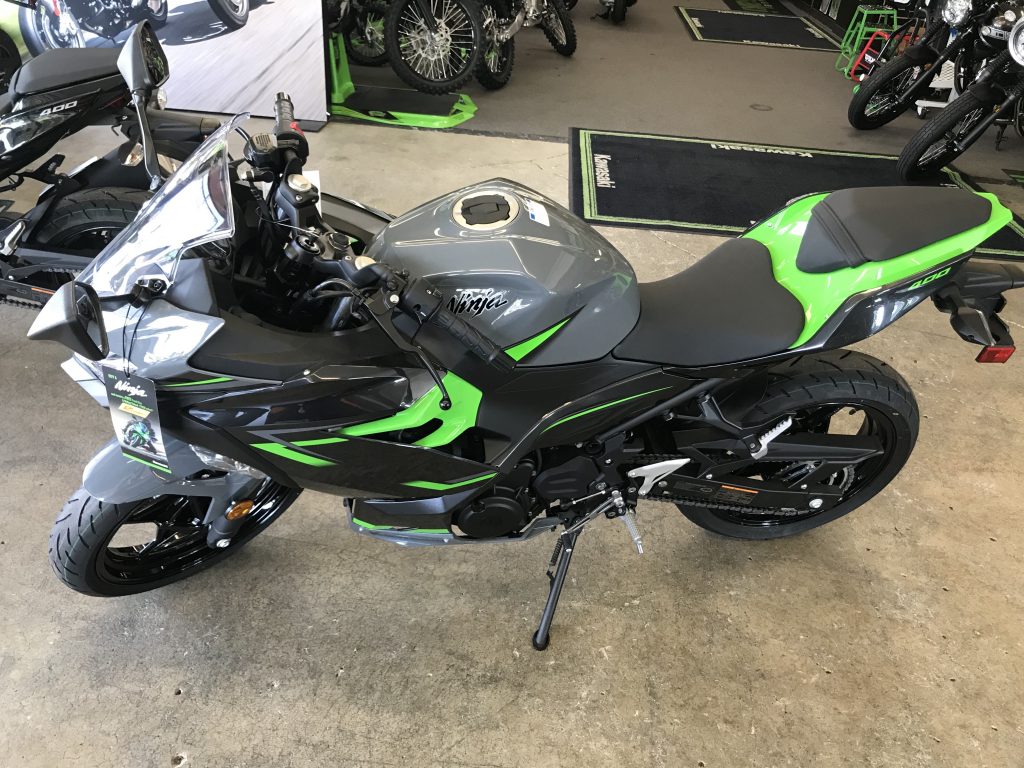
The most visceral and chilling question people wrestle with when looking at their first motorcycle – am I going to die? Absolutely! Regrettably, motorcycles are not capable of prolonging your life beyond biologically programmed time frame. Life, in itself, is 100% lethal. Everyone who ever lived, had eventually died.
Motorcycles, can make your life shorter or miserable, if you get seriously injured. As a rider, you are 27 times more likely to be injured than vehicle driver.
- Motorcycles are inherently less stable, because they are on two wheels.
- You are not protected by a hunk of metal, like you are in a car.
- Motorcycles are smaller than vehicles and drivers usually do not notice motorcyclists even when they are looking them straight in the eye (see inattentional blindness).
About 88,000 motorcyclists are injured and 5,000 die every year on the roads in the US. This is a sad and scary statistic.
No one purchases a motorcycle with intent to crash. Most often, crash occurs as a result of rider mistake and severity of the crash is proportional to that mistake. When crash is caused by a collision, most often, motorcycle is the one colliding with the vehicle.
Interestingly enough, are your more likely to crash in the following cases:
- Under 30 years old – someone who is young and inexperienced, with higher risk tolerance, is 2x as likely to crash than individual over 30 years old.
- More than 500CC engine displacement – bikes with large engine displacement are 8x times more likely to crash than smaller displacement bikes.
- Non-interstate roads – 3x times more likely to crash on non-interstate roads, than on interstates.
- At night – 2x times more likely to crash at night than during the day
Severity of the crash depends on the following factors:
- Alcohol – about 50% of fatalities occur due to alcohol impairment
- Helmet – 37% of motorcyclists count have been saved if they wore helmet at the time of the crash
- Speed – 33% of motorcycle crashes resulted in death because riders were speeding
Looking at total numbers, as a motorcycle rider, you have 1% chance of crashing your bike and 0.05% chance of dying. However, if you take learnings from above, you will significantly reduce your chances of getting in trouble:
- Lower your risk tolerance
- Buy a smaller bike
- Do not drive at night
- Do not drink (even a single sip) before riding
- Always wear protective gear and helmet (ATGATT)
- Do not speed
With this, your odds of getting into a crash become 0.0086% and dying – 0.00043% correspondingly. These numbers are low, they are not zero, but low. About 2% of population is willing to take this risk and buy a motorcycle.
One very important aspect to consider in risk mitigation is training. There is no substitution to methodical and periodic exercise of various riding skills, so when the time comes, you act instinctively. I highly recommend taking a MST (Motorcycle Safety Foundation) course in your area. Do both Pre-BRC and BRC courses. It is a 2 day commitment in total, and by the end of it you’ll know whether motorcycle is for you. It costs roughly $260 but it is money well spent. If anything, you will ride the bike for 2 days and decide this is not your cup of tea. Or you will catch a bug and will not get off of this machine for the rest of your life. There is only one way to find out – take the course! It is safe and coaches are hilarious.
Motorcycle type
First things first – what kind of rider are you? There are different motorcycle types for different purposes. Are you going to ride mostly in the city or will you take it to the mountains? Are you planning to do interstate rides for hundreds of miles, or just around the corner to work and back?
There are different motorcycles for different purposes. You want to pick the right bike for your intent. For example:
- Sport bikes look cool but they are unbearable on long trips. More than two hours in the seat and your back and neck will crack.
- Cruizers are comfortable for long hauls but will not move an inch in the dirt.
You are not buying a motorcycle to impress anyone. No one cares what you ride, including ladies. You are buying it for yourself. Think which bike would you like to ride if you were the last human to live on Earth and no one saw you riding it – then go test ride it.
Make and model
You’ve ridden one or two motorcycles and can easily be swayed by more experienced friends or sales people at the dealership. I will give you honest advise based on personal experience.
Your first bike should be Japanese – Kawasaki, Honda, Suzuki, Yamaha. They are reliable and (relatively) cheap. Maintenance will also be cheap because they are mass produced and there are tons of parts everywhere. Do not let your friends convince you to get an American motorcycle, like Harley Davidson, or Italian like Ducati or Aprilia. These brands are overpriced, expensive to maintain and lower quality than Japanese. If you don’t want to make constant trips to your mechanic and live service to service, stick with Japanese bikes that just work.
As for the model – you want to stay between 250cc and 400cc. CC stands for Cubic Centimeters – a measure of engine displacement. Low CC motorcycles have high power to weight ratio and accelerate just enough to be fun, but not enough to kill you. Once you get comfortable and ride for a few years, you will make your own mind whether to upgrade to a bigger bike. Lack of speed is not going to be your concern because these motorcycles have plenty of torque. Ninja 400 will have enough juice to keep you safe on the freeway without doing a wheelie every time you accelerate.
If you go to a dealer for a motorcycle you will hear the same old tune – “get a bigger bike, you will grow out of it pretty quickly and will be bored”. This is a bunch of nonsense. Your primary job is learn to be a safe motorcyclist. 650cc motorcycle will very likely injure you before you learn to ride.
Here are my personal favorite motorcycle picks:

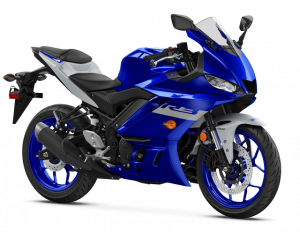
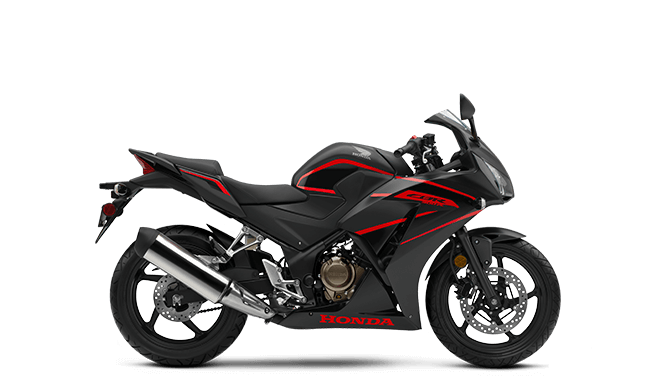
Gear
It is a common mistake for folks who buy motorcycles on the budget – max out on the motorcycle and leave no money for the gear. This mistake cost you the rest of your riding life, if you crash. You have to buy quality gear, even if it means sacrificing on the motorcycle.
You should wear your gear every single time you ride. There is a term – ATGATT – All The Gear All The Time. There’s also a saying – “Dress for the slide, not for the ride”. I realize it is no fun to be cooking in 80F temperature in full gear in traffic, but this sacrifice can mean a difference between eating cool vegetables afterwards and being one.
Gear does not need to look cool. Almost all motorcycle gear looks cool. Do not buy black gear that matches your black motorcycle that no one can see in the dark or on the dark pavement. Make sure your gear is easy to see, even when drivers are just scanning the road. Visibility is an important factor in making to your destination in one piece.
Helmet
Helmet is designed to protect your most precious organ – your brain. When buying a helmet, Department of Transportation requires a DOT certified helmet. It means nothing. You want to buy a helmet that is Snell certified. Good helmet will cost around $500 but it will save your bucket if something happens to your bike.
One statistical point to mention – riders with bright helmets are more likely to be seen on the road so pick a bright helmet like white or green. If you ride more than 30 minutes a day, you will benefit from quiet helmets that reduce air noise. Air can be deafening if left unchecked. It was proven that air noise in the helmet reduces hearing sensitivity 60% over extended period of time.
You do not want to wear partial helmet or half helmets. They will not protect your chin in case of impact and you will lose your jaw. Get a full helmet and stay safe.
My favorite helmet picks based on brand reputation and product quality are Sheoi and Arai.
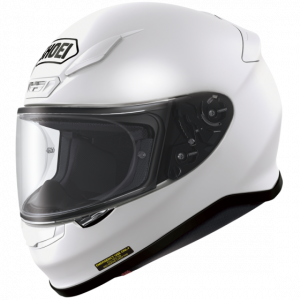
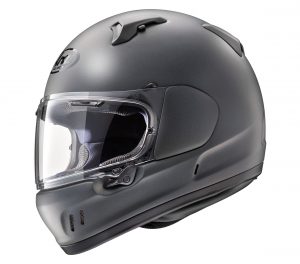
Jacket
Road rash can be quite a pain and take a long time to heal. Jackets are designed to protect against it. They will also reduce impact in sensitive areas like shoulders and elbows. Jackets by themselves do not protect your back or chest, but you can get impact inserts and wear them either under the lining of your jacket or on your body.
Statistic shows that bright jackets or jackets with reflective inserts increase your visibility and reduce collision rate. Get a jacket with white or green colors. I know full black looks cool but people will not see you and just run over.
Jackets are made to withstand tearing if you are sliding for 30 seconds on the road. No regular clothes can match that, so be safe and get a jacket.
You do not need a full body suite to be safe – jacket and pants will do just fine. At the same time, do not get just a regular leather jacket – it will not have padding inserts for shoulders and elbows. Get special motorcycle jacket with good safety features.
My picks for jackets are AlpineStar and Dianese. They both make quality products, one is pricier than another. A good jacket will set you back about $400 – $600. I realize this is expensive but you have one body for entire life and need to take care of it.
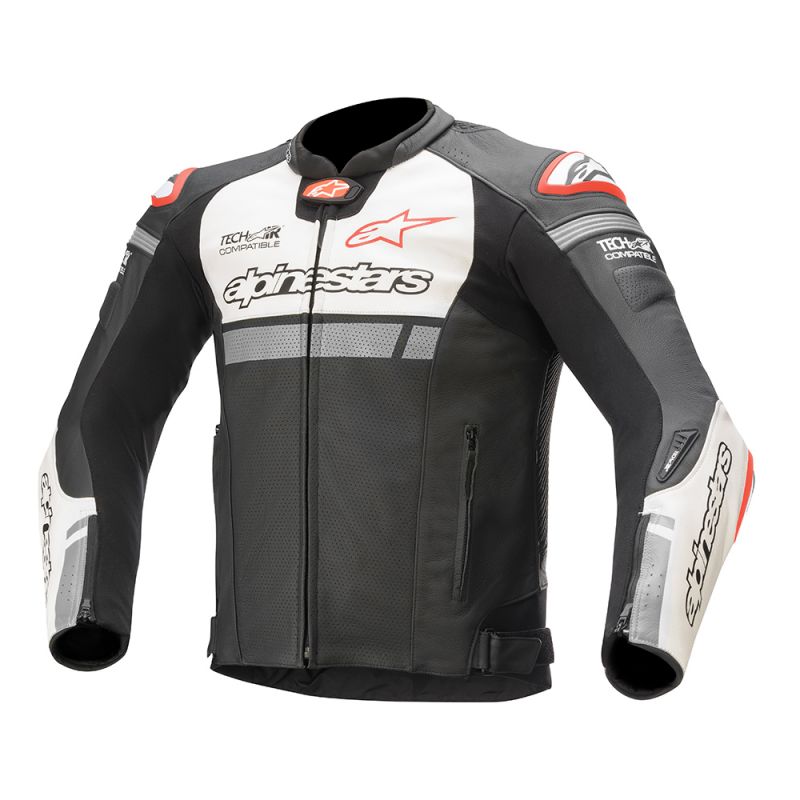
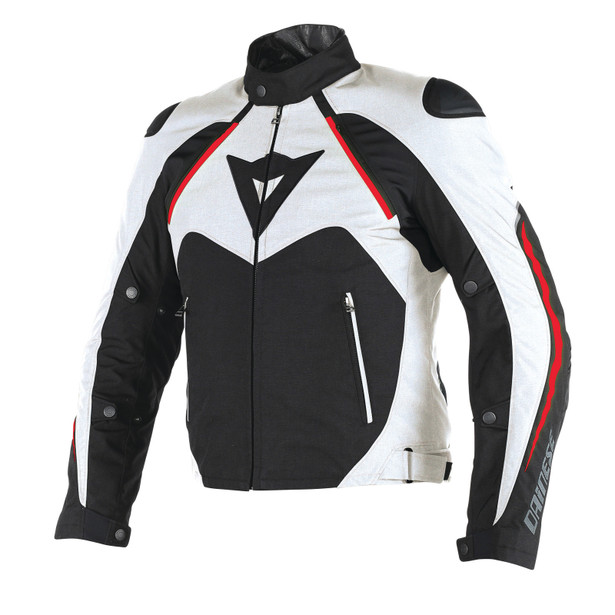
Gloves
Needless to say, fingers are fragile. When finger meets the pavement, tree or a road sign, latter wins every time. You need good protection. In gloves you are looking for stability upon impact and airflow to sweat less on hot summer days:
- Knuckle impact protection – something sturdy to take a hit if you are falling
- Finger bridge to keep your pinkie with the rest of the crew
- Pores to let air flow through your hand when the bike is moving
- Length to cover part of the jacket and prevent open skin even if jacket is pulled back
I’d recommend to go with gloves in $100 range for summer rides. Winter gloves can be more expensive because they come with heating, but we will leave those aside for now.
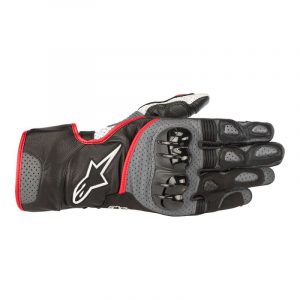
Pants
Regular jeans will not cut it. Denim will tear within a few seconds of sliding. Boutique jeans have nothing to protect your knees.
You have a few options – either go for motorcycle leather or fabric pants or get motorcycle jeans made of fabric with Kevlar. Motorcycle pants will not be light but that’s OK, you will get used to them them. You can’t feel their weight while riding anyway.
Bull-it makes good motorcycle jeans. These will cost about $100 – $200.
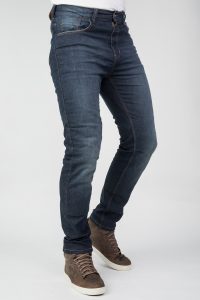
Boots
Regular converse will not save your ankle if 500lbs motorcycle crashes on it. You want to get good motorcycle footwear to match your carefully selected attire. Here’s what matters in boots:
- Ankle protection (Duh!) – make sure they are high enough to cover your ankles and have inserts with padding to hold motorcycle weight
- Grippiness – they must grip pavement well when you put your foot down at the traffic light. If your boots are slippery you will drop your bike.
- Airflow – there needs to be tiny holes to let air ventilate your feet while you ride. Boots in summer are awesome only in Texas, everywhere else people sweat.
- No heels – heels will interfere with your break and clutch controls so get flat boots.
- Sturdy around toes on the top of the boot – you will use your feet to shift gears a lot and having extra padding saves your skin and bones from wearing off.
I prefer AlpineStar and TCX boots that meet all requirements above. They are going to cost around $150 – $260:
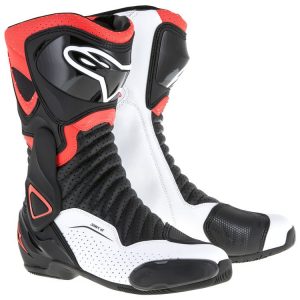
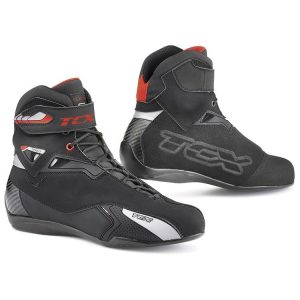
Extra protection
Remember we talk about shoulder and elbow protection that jackets provider? They don’t protect chest and back from impact and those are pretty important body parts. There are products that can cover the gap. For example, Dainese Manis D1 G Back Protector Insert will reduce impact force significantly if you fall on your spine or somethings hits you from behind. I am not endorsing this particular product, just listing it here for completeness.
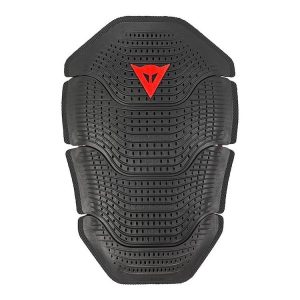
A good back and chest protectors will cost about $100 each.
If we add-up all the money we just spent on gear in this article – we’re looking at $1,700. Of course, this is great gear that will serve you well, but it is a bit pricey. Do your own research and see where you can save money.
Other expenses
Aside from motorcycle itself and the gear, you will bleed money in a few more ways on regular basis:
- Insurance – there are a few carriers of motorcycle insurance in the US and if you want good coverage and liability, it will cost approximately $800 / year.
- Gas – you will not spend as much on gas as you would in the car because motorcycle can do 59 MPG. A full tank will set you back about $15 and fit approximately 5 gallons.
- Maintenance – this has two parts and on average will set you back $400 a year
- Maintenance of the motorcycle itself, just like you would maintain car (engine oil, tires, brake fluid, etc.).
- Second part is motorcycle specific – namely cleaning and winterization. You need to clean and lubricate chain regularly. You will need to add fuel stabilizer into the tank for the winter.
- Parts and accessories – you’ll need motorcycle cover for winter or rain, battery tender to keep it juiced up in the winter, stands to work on chain and wheels, etc. This will cost approximately $200 as a one time expense until something breaks.
Motorcycles are not cheap.
Time
There is a common misconception that motorcycle riders can get to places faster. They don’t need to start a car – can just jump on a bike and go. They can flick between cars and don’t have to sit in traffic.
All of this is not true. You must put your gear when you leave and take it off when you arrive – that’s time. Lane-splitting is illegal in most of the country so you will get a ticket if you do split. You can’t really go too fast because you will either kill yourself (see statistics in the first paragraph) or get a speeding ticket. You have a lot of maintenance to do on the bike, more than a car.
Time savings usually come from ability to park almost anywhere and freedom to use HOV lanes.
Convenience
As a driver you hop in a car and go without thinking about your entire route in details. You may recall that you are missing milk for morning coffee and drop by grocery store to restock. This won’t fly on a motorcycle.
You do not have storage capacity at all. Be prepared to carry a backpack every time you ride. If you don’t have a backpack, you can’t even buy a chocolate bar because you have no place to put it. You can’t hold it in your hand because you need both to control your beast.
Is it worth it?
Are you still with me? You are a trooper and I appreciate your patience while I was making my point.
Here’s the truth. People do not buy motorcycles because it logically makes sense. It does not. You are more likely to die and if you don’t – you will pay a lot of money while you live.
People buy motorcycles for the sensation they get riding them. You can get similar feeling riding a bicycle downhill for 2 minutes straight. You feel power in your machine, you can accelerate fast and flick left or right quickly. You are a lot more aware of your surroundings while you ride – sounds, smells, temperature. You feel more present and more alive in the moment.
Nothing beats the feeling of power on the track (close controlled environment, unlike open freeway). Humans are biologically designed to enjoy acceleration and feel adrenaline rush. If you enjoyed jet-ski on a hot summer lake, you will love a motorcycle.
Imagine yourself riding a motorcycle around tropical island or winding mountain road. You enter corners by leaning your motorcycle and accelerate on the way out. You do not need to use breaks because you downshift and break with your engine. Corners and winding roads are annoying in the car because you are constantly pull be centrifugal force left or right. When you ride a bike, you compensate for centrifugal force by leaning your motorcycle.
I’ll leave you with this…
